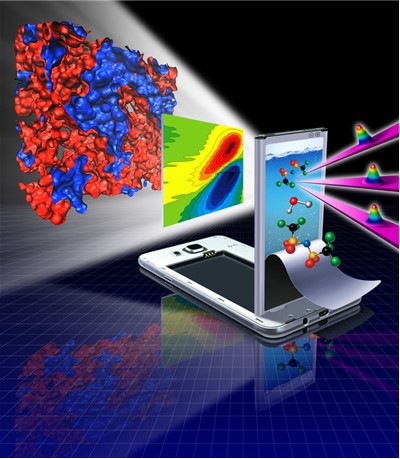|
Two-dimensional infrared spectroscopy (2D-IR) and polarization selective pump-probe spectroscopy (IR-PP) has been applied to study various chemical and biological processes with femtosecond time resolution. Recently, our group extends research interest into solvation dynamics in non-aqueous organic electrolyte system used in commercial Li-ion battery of electrolytes as well as in highly concentrated aqueous electrolytes for advanced energy storage system
Electrolytes are ubiquitous and indispensable in all electrochemical devices including electrolytic cells, capacitors, fuel cells, or batteries. Their function is the same in devices for serving as the medium for the ion transport between electrodes. The electrolyte determines how fast the energy could be released by controlling the rate of mass flow within the battery. Thus, it has been suggested that the solvation structures and dynamics of Li ions in liquid electrolyte play an essential role to Li-based battery performance. Lithium ions in highly concentrated aqueous electrolyte used in lithium-ion battery (LIB) shows unexpectedly high ion mobility despite high viscosity of the concentrated electrolyte. Here, carrying out femtosecond IR pump-probe and two-dimensional IR spectroscopy studies, we show that a considerable amount of water even in highly concentrated electrolyte solutions exhibits bulk-like water properties and forms hydrogen-bonding network wire structures with nanometer diameters. Furthermore, time-resolved rotational anisotropy, spectral diffusion dynamics, and molecular dynamics simulations of water indicate the presence of interfacial water on ion aggregate networks that helps reducing electrostatic friction of hydrated lithium ions, resulting in an unexpectedly rapid transport of lithium ions.
|

|
 123rd General Meeting of the KCS
123rd General Meeting of the KCS
 123rd General Meeting of the KCS
123rd General Meeting of the KCS